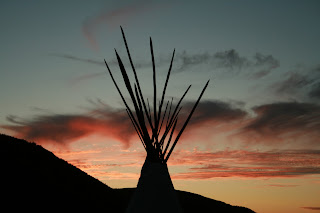 |
| The parliament building |
Nope, I didn’t make it up. Fiji, a country
in the South Pacific, has had at least four coups in its 40 years as an
independent country. The coup I refer to above took place in May 2000, when
civilians deposed Mahendra Chaudhry, the country’s first prime minister of
Indian descent. The distinction of his heritage lies at the root of his
government’s overthrow.
The Indian diaspora in Fiji goes back to 1879, when British
colonizers began actively recruiting laborers across South Asia and East
Asia to work in Fiji’s
sugarcane fields. Over a period of about 37 years, 61,000 migrants – most of them from India – came over as indentured workers with contracts to work in the fields for five-year terms.
 |
| On his site, Just Pacific, Rod Ewins shares his rare and absolutely amazing collection of postcards of Indo-Fijians. Check it out at: http://www.justpacific.com/fiji/fijiphotos/cards/Indo-Fijians/ |
The migrant men hailed from poor, rural backgrounds, were illiterate, and had few means back home.
The women were either kidnapped, prostitutes, or young widows. Living and
working conditions in their new country were squalid, often brutal. Women were
raped in the fields to such an extent, with illegitimate births and suicide so
rampant, that public outrage in the UK brought a halt to the entire scheme in
1920, when the British canceled all indentured contracts. The workers had the choice of
returning to India or staying in Fiji. And because most of them made so little
money or were denied wages to begin with, most couldn’t afford to leave.
Roughly five generations later, Indo-Fijians have their
own unique national identity. Few have visited India or have any connections with
the old country. With their forebears hailing from every region, religion, and
linguistic group of India, over time, the Indian Fijians have developed their
own unique culture and even their own dialect, known as Fiji Hindi, a hybrid language that’s evolved from
many diverse Indian ones (northern and southern) and is now spoken widely
across the Fijian islands.
Relations between the Indo-Fijians
and indigenous Fijians were for the most part peaceful for generations until about
25 years ago when Indians began gaining stronger political clout at all levels
of government, and race became highly politicized. The issue is, of course, more
complicated than it might seem (for example, some observers note, different
indigenous groups vie for power over one another as much as among ethnic
lines), yet the two cultures are so entwined in both subtle and overt ways that
the power play seems pointless. Reportedly, the best friend of George Speight – the leader of the 2000 coup – is
Indian, while Chaudhry’s son-in-law is an indigenous Fijian.
The first military-led coup took place in 1987. Some say
it happened because the government of then-leader, Ratu Mara, had too much of a
pro-Indian bias. In 1990, a new constitution passed, institutionalizing the domination
of the indigenous Fijians over the Indo-Fijians in the political system. The
latter were heavily taxed and could hold only limited seats in the government – never
as prime minister.
After massive protests and at least one contested
election, a third government drew up yet another constitution in 1997,
reinstating political rights to minorities and leading to the Commonwealth of
Nations bringing Fiji back into its fold. And in 1999, in a historic election, the
nation elected its first ethnic Indian, a third-generation
Fijian, Mahendra Chaudhry, as its prime minister. Historic, yes, but almost from the get-go, rumors
of yet another coup started brewing. For whatever reason, Chaudhry didn’t want
to believe the rumors and even ended up abolishing his intelligence service.
On the one-year anniversary of his election, a charismatic, and rather
interesting character, George Speight, along with his followers, stormed into the
parliament building to lead the country’s next bloodless coup.
 |
| George Speight (forefront) |
Speight has an
interesting, cosmopolitan background. He earned both a bachelor’s and master’s
degree in business from the United States then worked in Australia as a
computer salesman and later a bank manager before returning to Fiji a few years
before he found his new calling as coup leader.
As they go, it was an odd coup, not just because the
journalists moved in and got cozy with the terrorists. Once Speight released
Chaudhry, his staff, and the MPs, it took a full two weeks for the interim
government to arrest Speight. A year later, he was elected to parliament,
though he never formally held the position. (He was in prison so was expelled
for non-attendance.)
A military dictatorship took over, but yes, within six years, there
was another coup. The next new military government, the same one in power today,
ditched yet another constitution and clamped down on free speech and the press. Reports
of human right violations abound, particularly on opponents of the current
leadership and, in 2009, Fiji was booted out of the Commonwealth of Nations for
the second time.
 Chaudhry was never reinstated to his old PM post, but he’s
continued his career in politics in various capacities, including serving as
the minister of finance and later as opposition leader. Controversy seems to dog
him, though, in part perhaps because he’s out of favor with the current leader.
Speight, meanwhile, is serving out a life term in prison.
Chaudhry was never reinstated to his old PM post, but he’s
continued his career in politics in various capacities, including serving as
the minister of finance and later as opposition leader. Controversy seems to dog
him, though, in part perhaps because he’s out of favor with the current leader.
Speight, meanwhile, is serving out a life term in prison.What makes the whole national saga so much more tragic is the bright future Fiji faced in its early years, not that long ago. It received its independence from the UK only in 1970 and was one of the most developed countries in the South Pacific, with ample and rich natural resources and a fairly healthy and growing economy. After the 2000 coup, the economy shrunk a whopping 10%, taking major hits in tourism and investment. Fijians now rely heavily on money sent home by the skilled, educated workers who started leaving the country in droves as well those who take up dangerous jobs as contract workers in the war zones of Iraq and Afghanistan. Ninety percent of those leaving are Indo-Fijians.
Not exactly a happy ending, but here’s hoping for a
brighter future.
































